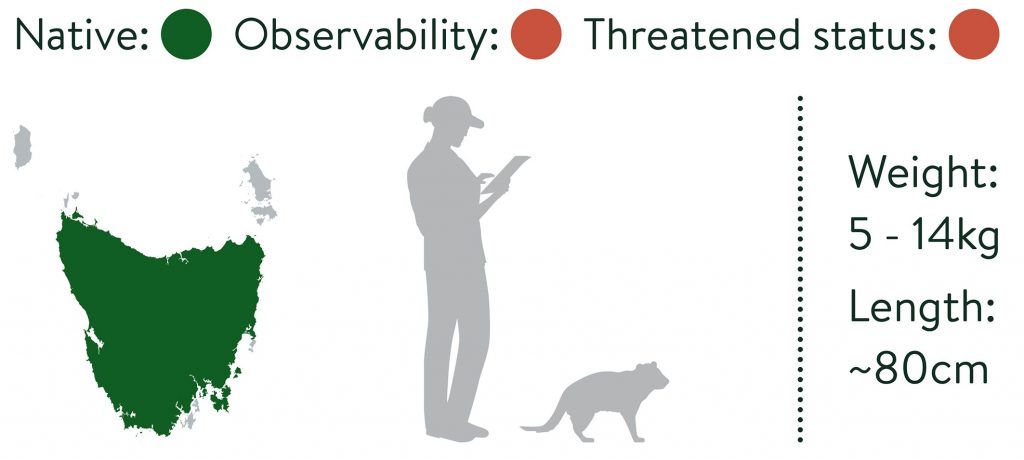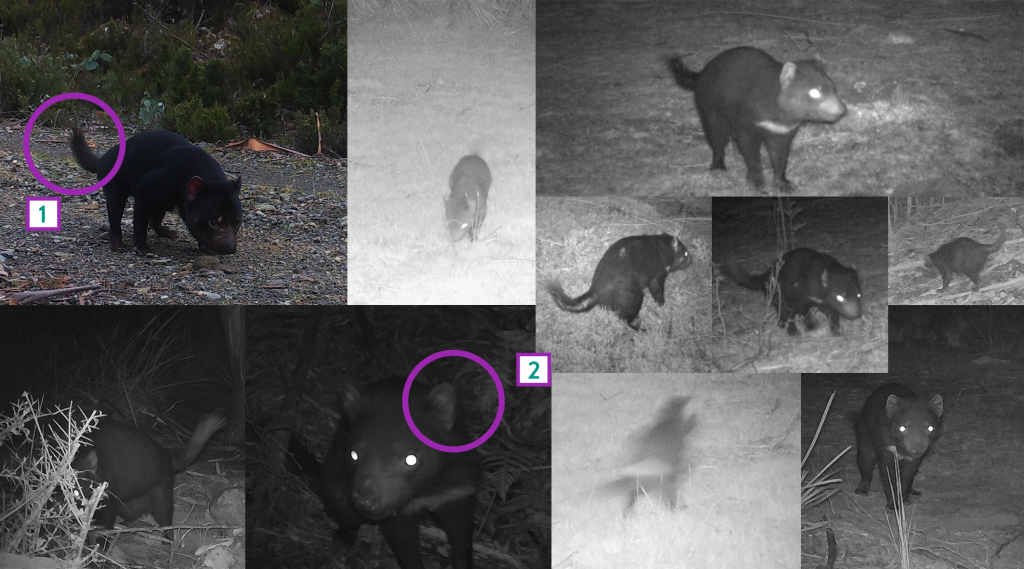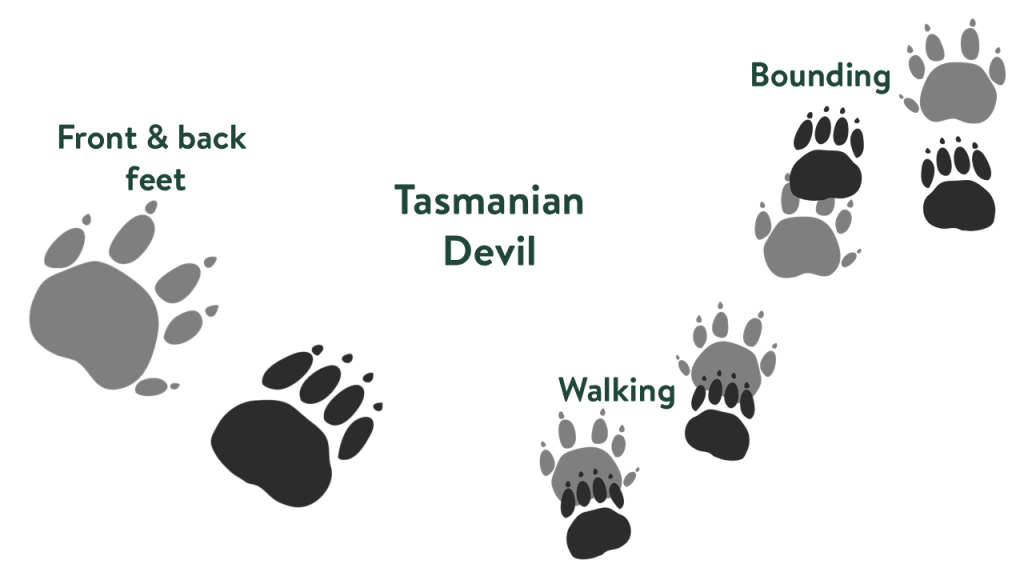Dasyuridae | Sarcophilus harrisii
Tasmanian Devils were found across southern Australia until about 3000 years ago but now survive only in… you guessed it… Tasmania! Devils are one of very few species in the world to suffer from transmissible cancer—Devil Facial Tumor Disease (DFTD). In fact, in 2014 a second, independently evolved transmissible cancer (DFT2) was discovered in devils from southern Tasmania. Between 1996 and 2020, the devil population is estimated to have declined on average by 68%, with local losses of up to 90%, but they’re hanging in there.

Lifestyle
Devils are nocturnal and solitary, though they may come into contact while feeding on a carcass or during the mating season. Males, growing larger at up to 14 kilograms, surpass females, which reach up to nine kilograms. Their expansive home ranges, averaging 1300 hectares, often overlap, with variations observed in specific regions like the Arthur-Pieman, where home ranges reach 2500 hectares and a core area of use spans about 250 hectares.
The devil mating season, occurring from February to April, can be a tad aggressive, with individuals sometimes inflicting biting wounds on each other using their canine teeth (no judgement…). Females develop a fat pad on the back of their neck that males will latch onto before dragging their mate into the den for copulation (ok, maybe a little judgement). This bitey behaviour could contribute to the spread of DFTD. Like other dasyurids (Greek: hairy tail), male devils invest heavily in reproduction at the expense of their own longevity. They may lose up to 25% of their body weight, become anemic and have reduced immunity during the mating season.
Devils den amongst rocks, in small caves, beneath tussocks and other dense vegetation, or in burrows, whether self-dug or created by wombats. These dens serve as resting places, mating sites, and locations for giving birth and raising young. Like other marsupials, devils give birth to tiny ‘neonates’ (six millimetres) that scramble to the pouch, where they suckle for about 100 days. Up to four young leave the pouch in Spring or early Summer. With the spread of DFTD, females typically only have one breeding opportunity in their lifetime, leading to a younger age at reproduction. The overall age structure of devil populations has shifted, with most devils not surviving beyond three years, a significant decrease from the pre-DFTD lifespan of five or six years.

Key identifying features
Stocky and powerful build with a broad head and large black nose. Black coat, often with a white collar around the neck or other white markings on the shoulders and rump. Short muzzle that is only lightly furred with long whiskers. Tail is shorter than the body, thick, typically curved upward (1), and often appears patchily furred. Large, pink-red, pointed ears (2). Hindlegs are shorter than the front resulting in a slanted stance.
Similar species
None.
Habitats
Devils can be found in all habitats, from the beach to alpine forests. However, they tend to avoid open areas, rugged terrain and dense rainforest. Devils hunt at the forest/grassland ecotone (edge) where they are able to intercept herbivore prey like macropods and possums.
Diet
Devils are the largest remaining marsupial carnivore. They hunt small to medium-sized mammals (e.g., rabbits and possums) and birds, and scavenge for larger animals (e.g. wombats and wallabies), including roadkill. In agricultural areas, devils capitalise on available resources, feeding on newly born or still-born lambs.
Threats
Symptoms of Devil Facial Tumour Disease (DFTD) were first detected in 1996 in Tasmania’s northeast. The disease has since spread across the state occupying more than 90% of the devil’s range. It is thought that devils may be particularly susceptible to disease due to low levels of genetic diversity in the population. DFT2 appears similar in appearance and transmission to the original facial tumor disease but can be differentiated through lab samples.
While DFTD remains highly lethal, recent reports of tumour regressions offer a glimmer of hope for the coexistence of devils and DFTD rather than outright extinction. Nevertheless, devils continue to confront significant challenges, compounded by habitat loss and road mortality. Before gaining protection in 1941, devils faced additional threats as they were hunted due to perceived risks to livestock

